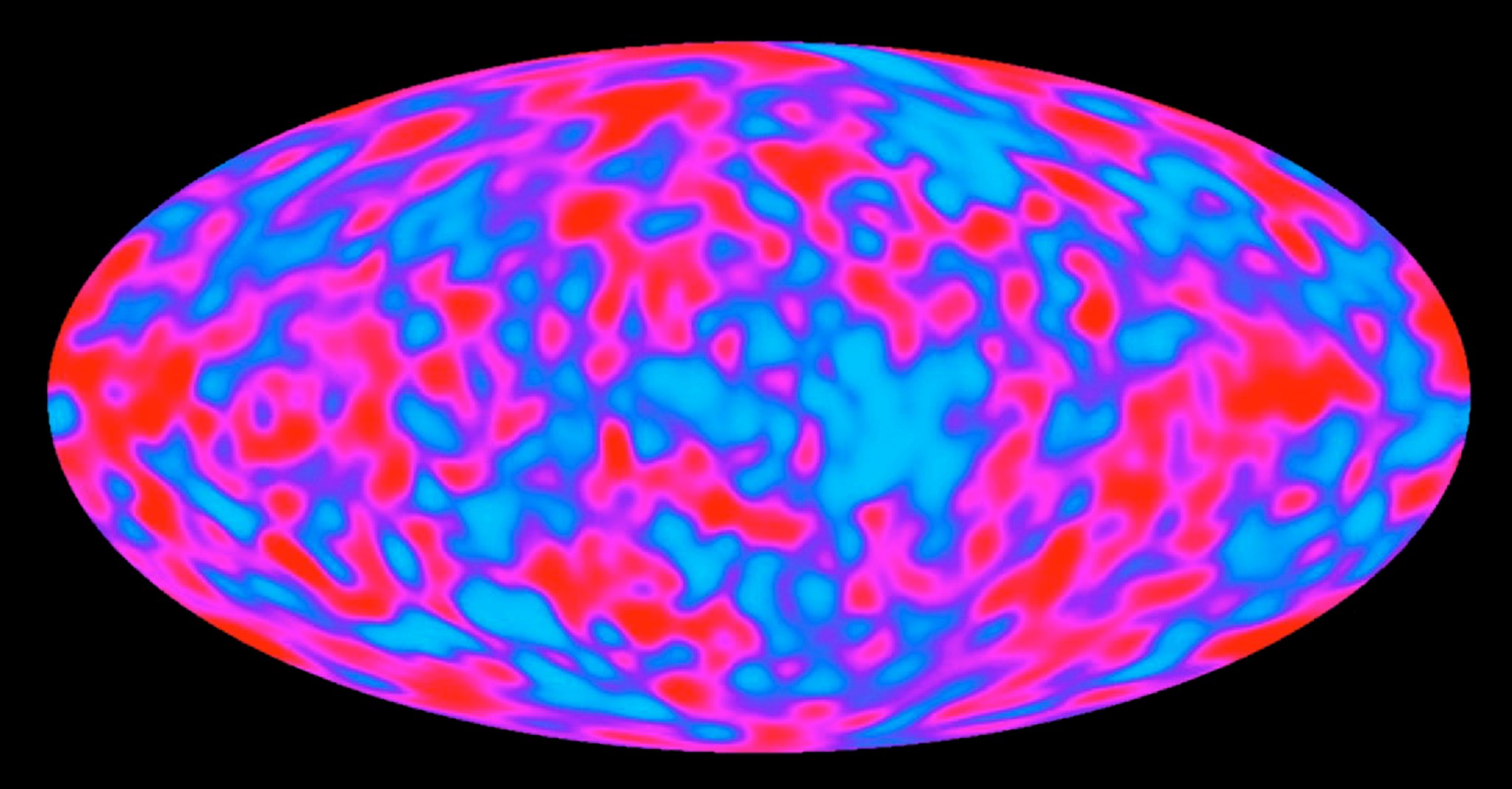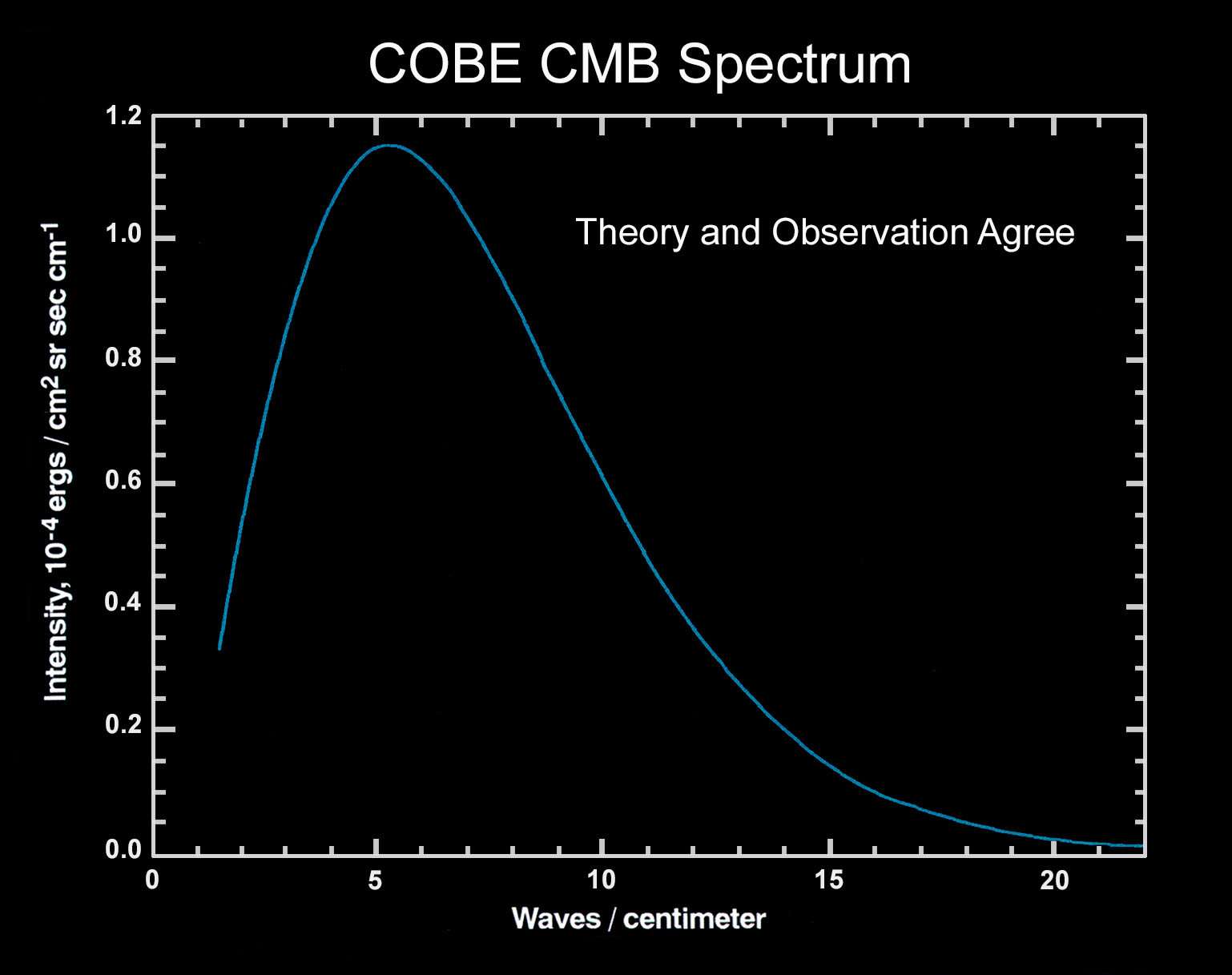COBE’s Top Discoveries
COBE was designed to study the origin and dynamics of the universe, including the theory that the universe originated in a hot, dense state and expanded and cooled to its present form, a process called the big bang.
In the 1920s, Edwin Hubble provided the first observational evidence that space was expanding, indicating that the universe had been smaller, with all galaxies much closer together, in the past.
In the 1940s, George Gamow, Ralph Alpher, and Robert Herman theorized that the early universe was not only extraordinarily dense, but had also been extremely hot. They suggested that nuclear reactions taking place in such an environment accounted for the abundances of hydrogen and helium, together with a small fraction of heavier elements, seen in the universe today.
Alpher and Herman showed that another consequence of a hot origin for the universe is that a faint echo of radiation emitted by the original fireball should still fill the cosmos.
In 1964, Arno Penzias and Robert Wilson of the Bell Telephone Laboratories, using a sensitive microwave antenna in Holmdel, New Jersey, found an unexplained noise in their data. It came from all parts of the sky with equal intensity: the CMB (cosmic microwave background).

COBE’s Differential Microwave Radiometer showed for the first time that the CMB had an intrinsic anisotropy, intensity changes that varied by 1 part in 100,000 from place to place. These tiny variations show how matter and energy were distributed when the universe was very young. Later, through processes still poorly understood, the variations developed into the large-scale structures we see in the universe today. COBE had produced the first “baby” picture of the cosmos.
The Far Infrared Absolute Spectrophotometer instrument measured the CMB spectrum with a precision of 0.03%, demonstrating for the first time that it closely matches that of a blackbody — a perfect emitter and absorber — with a temperature of 2.725 K (about 454.8 degrees below zero Fahrenheit or minus 270.4 Celsius). This observation agrees well with predictions of the remnant glow from a cosmos originating in a hot big bang.
The DIRBE Diffuse Infrared Background Experiment mapped absolute sky brightness from 1.25 microns to 240 microns and succeeded in detecting the cosmic infrared background. This cosmic core sample contains the cumulative emissions of stars and galaxies dating back to the epoch when they first began to form. These COBE measurements constrain models of the history of star formation and the buildup of elements heavier than hydrogen, including those composing living organisms.































